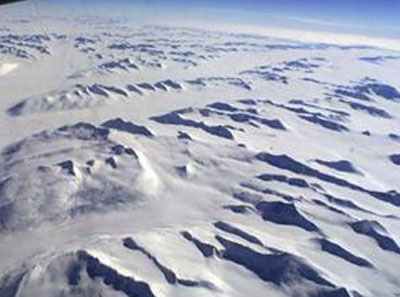A massive earthquake that struck Chile in 2010 caused glaciers thousands of miles away in Antarctica to calve, a study published Sunday in the journal Nature Geoscience found. Seismic surface waves radiating away from the earthquake’s epicenter traveled some 2,900 miles (4,700 kilometers) before passing through Antarctica’s ice sheets and causing small tremors, or “icequakes.”
The researchers examined seismic data from dozens of stations in the hours before and after the March 2010 Chilean earthquake. They eliminated the longer-period signals as the seismic waves moved from the faraway epicenter to determine high-frequency signals from close-by sources. They found that almost 30 percent of the stations revealed definitive proof of high-frequency seismic signals as the surface-wave reached Antarctica.
“We interpret these events as small icequakes, most of which were triggered during or immediately after the passing of long-period Rayleigh waves generated from the Chilean mainshock,” posited study leader Zhigang Peng, an associate professor in the School of Earth and Atmospheric Sciences. “This is somewhat different from the micro-earthquakes and tremor caused by both Love and Rayleigh-type surface waves that traditionally occur in other tectonically active regions thousands of miles from large earthquakes.”
Interestingly, the newly discovered icequakes react only to volumetric deformation from far-off seismic events.
“Such differences may be subtle, but they tell us that the mechanism of these triggered icequakes and small earthquakes are different,” Peng noted. “One is more like cracking, while the other is like a shear slip event. It’s similar to two hands passing each other.”
According to the researchers, the icequakes took place in different regions of Antarctica. Some were rapid bursts, lasting less than a second, and others lasted up to 10 seconds.
The researchers contend that the source locations of the icequakes, while hard to identify because of limited seismic network coverage on the continent, are likely formed extremely close to the ice surface.
Agencies/Canadajournal
 Canada Journal – News of the World Articles and videos to bring you the biggest Canadian news stories from across the country every day
Canada Journal – News of the World Articles and videos to bring you the biggest Canadian news stories from across the country every day



